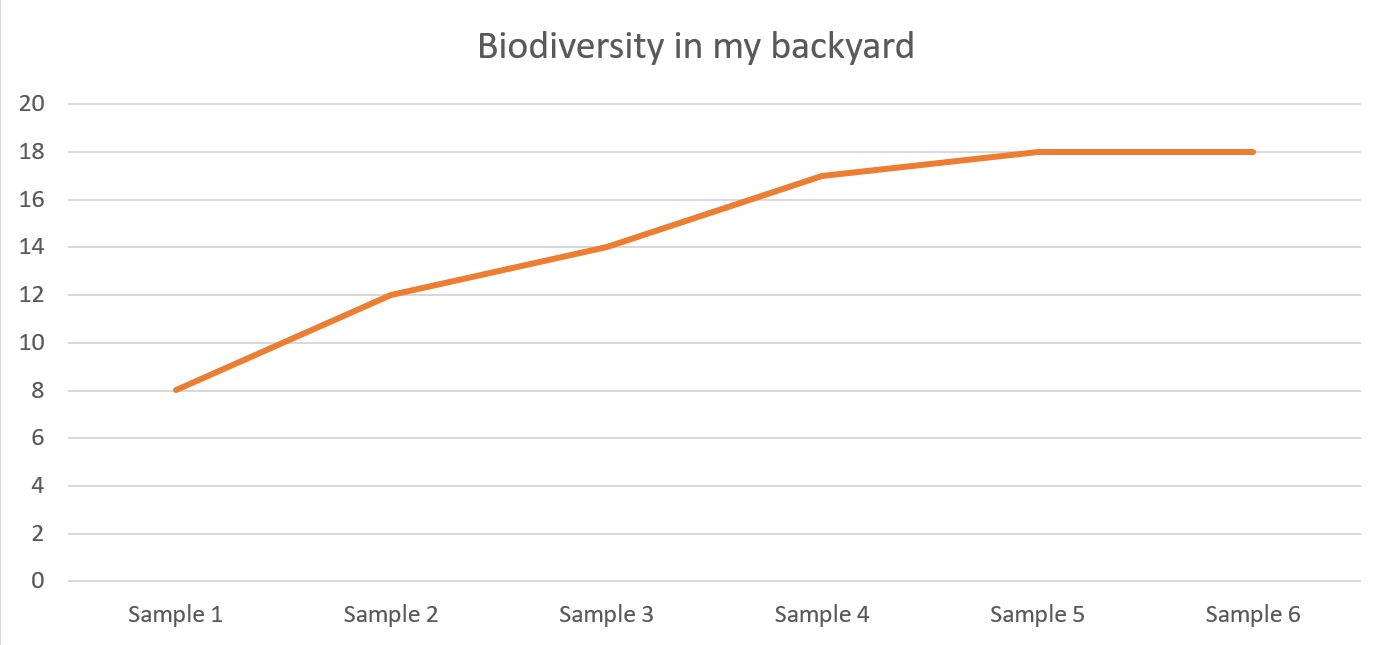Biodiversity Study
Learning objectives
During the study students will have opportunities to:
- Identify, describe and explain the importance of biodiversity.
- Explain through synthesising a number of reasons the global, national and local impacts of biodiversity loss.
- Undertake fieldwork investigations in their locality to use and present data to show an understanding of how biodiversity can be measured and what their results mean.
- Identify, describe and offer reasons for the approaches taken by Dartmoor National Park Authority to reverse biodiversity decline at species and habitat levels.
Key question: Why do bees matter and what have they got do with biodiversity on Dartmoor?
Hint: Use the Keywords section below to help you with your explanations
Start with Resource 1 (PDF) which shows 8 different photos of habitats (where plants and animals live) and ask students what they notice. Which has most colour, the most texture, and the most variety?
Biodiversity can be defined as the variety of plant and animal life in the world or in a particular habitat, a high level of which is usually considered to be important and desirable.
Look again at Resource 1 – which do students think contain the greatest biodiversity?
The images can be printed and sorted into a rank order, with the habitat containing the most biodiversity at the top or first position and the habitat with the lowest biodiversity at the bottom or 8th position.
The images are of:
- Tropical Rainforest
- Conifers in the UK
- Wheatfield
- Coral reef
- Desert
- Rolling Devon farmland
- Mountains
- An English Oak tree
Now watch Resource 2 which expands on the definition and explains the importance of biodiversity:
If high levels are considered to be important, what is happening to biodiversity across the globe?
Now listen to Dr Steve Morton, an ecologist working in Australia explain what biodiversity is and why he thinks it is important:
What are the five reasons he gives as to why we should value biodiversity? What is the surprise 6th ‘negative’ value of biodiversity?
Next ask students to undertake some research using the internet to explore one ecosystem. They could focus on one of the 8 examples given in Resource 1 or they could select a different one and list answers against the 5 (or 6) reasons to value that ecosystem.
In the last part of Resource 3 Dr Steve Morton explains why he is optimistic about the future and how science can help understand biodiversity, and therefore inform decision makers about what we need to do to protect biodiversity.
Activity
A common technique for estimating the total number of species in an area or habitat is to count the number of species in successive samples within that area. When a point is reached at which additional samples do not yield additional species it is assumed that all, or almost all, of the species have been counted.
You will need:
- A quadrat – a square made with four equal lengths of stick (e.g. garden cane). Useful for calculations if you want to do them later to make the square either 1 metre x 1 metre or 0.5m x 0.5m.
- A magnifying glass will help if you are counting very small things.
How big does a quadrat need to be?
You could do this as a discussion exercise with students – the principle is that you need to be able to capture ‘enough’ data to be meaningful without going to extreme lengths of time, so it very much depends on your chosen habitat and the target species.
If you want to sample plants, how big are they? If you are sampling trees your quadrat will need to be large, possibly 20 metres x 20 metres in older forest. But if you are sampling a lawn for wild-flowers you may get away with a quadrat as small as 25 cm x 25cm (0.25m x 0.25m).
The same is true for animals but these are a bit more tricky because they move! For invertebrates living in leaf litter on the woodland floor 0.25m x 0.25m might work, but large mobile or flying creatures need a different sampling strategy. Have you ever tried sticking a quadrat on a herd of elephants?!
Time:
About 2 hours
Method:
- Select your ‘study area’. This could be your garden, a hedgerow along a publicly accessible footpath or quiet road (beware cars) or a publicly accessible woodland. You need an area at least 10 metres long by 2 metres wide.
- Place your quadrat at one end of your study area and count all the species in it. You can count everything – mosses, lichens, ferns, flowering plants, insects, spiders, other invertebrates, amphibians, reptiles etc. but this can take a long time. Sometimes ecologists just focus on a single ‘group’ of plants or animals and this will still give fairly accurate results.
- As you gather your data create a data table like the example below to record your results:
| Quadrat number | Number of new species | Total number of species |
|---|---|---|
| 1 | 8 | 8 |
So, in this example in our first quadrat we found 8 species.
- Now flip your quadrat on its side, along your 10 metre area sample line, making sure you don’t have any of quadrat 1 species in. Repeat, filling in the next row of the data table:
Quadrat number Number of new species Total number of species 1 8 8 2 4 12 So in our second quadrat we found 4 new, different species to the first 8 we found in quadrat 1. We record the ‘cumulative total’ as 12.
- Continue to flip the quadrat and count new species until you are finding no new species. Your finished table might look like this:
Quadrat number Number of new species Total number of species 1 8 8 2 4 12 3 2 14 4 3 17 5 1 18 6 0 18 - Plot you results on a graph with the quadrat number on the horizontal axis and the total 'cumulative' number of species on the vertical axis. With our example the graph would look like this:

- Now repeat the experiment in a very different area or habitat. How do the two habitats or areas compare? Which has most biodiversity?
- Follow up: An important part of science is to review results and suggest improvements to experimental design especially looking for possible sources of error, so:
- How accurate do you think your estimate is?
- How could you make it even more accurate?
- Where are there sources of error in this investigation?
- If you were counting plants – were they really all separate or could some of them have been the same individuals?
- If you were counting invertebrates – could you be sure that you found them all?
- Finally: Total species counts give an indication of biodiversity but as we heard in the videos there are other components of biodiversity which are not measured in this fieldwork. Remind students that biodiversity isn’t just species numbers. Further – actual diversity indices in biology use species abundance as a measure, that is how much does each species contribute to overall diversity.
Help students to use the descriptions of habitats and species below plus the factsheet to consider whether Dartmoor demonstrates high levels of biodiversity.
Dartmoor Habitats
There are a great variety of habitats on Dartmoor, some of which are nationally or even internationally important. They are home to many rare plant and animal species. There are large areas of blanket bog on the highest part of the moor and in the more sheltered, steep-sided valleys are broad-leaved woodlands. Between the valleys and the blanket bogs is a mixture of heath and grassland.
Dartmoor is of international importance for its blanket bogs, upland heaths, upland oakwoods and cave systems, and of at least national importance for its valley mires, Rhôs pasture and grass moor. Other notable habitats in Dartmoor National Park include species-rich haymeadows and hedgebanks, granite tors, torrent rivers and lowland heath.
Wildlife
Dartmoor is the largest and highest upland in southern Britain, exposed to strong winds and high rainfall. The soils are acidic and the area has been relatively undisturbed by intensive agriculture. These factors make the National Park especially interesting in terms of its wildlife.
Because of the climate and diversity of habitats there is a great diversity of species. Dartmoor is also an important reserve for those species that can withstand harsher conditions including some very rare plants and animals. Dartmoor is particularly noted for rare lichens, butterflies and other insects. There are also many birds of moors, heath and farmland to be found here.
Learn more about Dartmoor's habitats and species by exploring the Wildlife and Heritage section of our website.
You can also download our Wildlife and Habitats Factsheet (PDF).
Exploring biodiversity in more detail
In Resource 2 the narrator talks about the importance of links between species to make biodiversity in an ecosystem resilient (strong).
Now use Resource 5 to explore five important species on Dartmoor. Students could draw a diagram of the relationships between their chosen species and other species in the same habitat. Do any share relationships? Does this make the biodiversity on Dartmoor stronger or more fragile?
What are ecologists and Rangers doing at Dartmoor National Park to support species, habitats, ecosystems and the links between them?
Use Resource 6 to find out more about work to support populations of Marsh Fritillaries and Southern Damselflies, and to answer the initial key question:
Why do bees matter and what have they got do with biodiversity on Dartmoor?
Optional activity
As an extension, students could think about the six reasons listed in the YouTube video Resource 2, being mainly about biodiversity seen from a human perspective. In philosophy this would be utilitarian and sometimes it is termed anthropocentric - that is from a human perspective rather than ecocentric which would be a ‘nature-centred’ view of the world.
Ask the following questions:
- Does biodiversity have a value in itself beyond the uses to which humans might wish to use it?
- What is the ‘intrinsic’ value (the ecocentric view) of the ecosystem they have chosen to study in question 1?
- What about the Dartmoor species, Marsh Fritillaries and Southern Damselflies? Are they being managed for any of the anthropocentric reasons or for their value in their own right (ecocentric)?
Keywords
Abundance: In ecology, local abundance is the relative representation of a species in a particular ecosystem. It is usually measured as the number of individuals found per sample. The ratio of abundance of one species to one or multiple other species living in an ecosystem is referred to as relative species abundances
Biodiversity: The variety of plant and animal life in the world or in a particular habitat, a high level of which is usually considered to be important and desirable. Ecologists also talk about ecosystem diversity, species diversity and genetic diversity.
Ecocentrism: A term used in ecological political philosophy to denote a nature-centred, as opposed to human-centred (i.e. anthropocentric), system of values.
Ecosystem: A biological community of interacting organisms (plants, fungi, animals) and their physical environment.
Habitat: The natural home or environment of an animal, plant, or other organism.
Quadrat: A portable frame, typically with an internal grid, used to assess the local distribution of plants or animals.
Species: A group of living organisms consisting of similar individuals capable of exchanging genes or interbreeding.
Utilitarianism: The philosophical doctrine that actions are right if they are useful or for the benefit of a majority, usually the majority being humans rather than other animals or plants.
